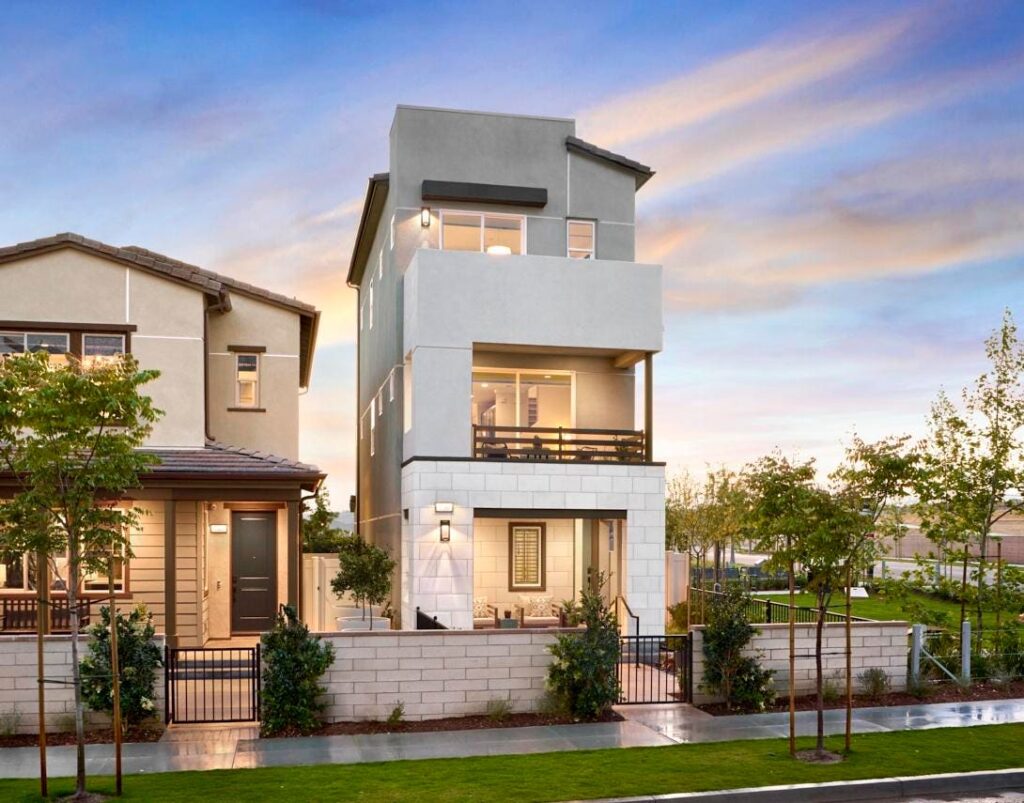Homes with more and larger windows are a wellness-enhancing architectural trend.
Tri Pointe Homes
The American Institute of Architects’ fourth quarter 2023 Home Design Trends Survey of its members reflects trends that impact residents’ health and well-being. Surprised at some of the findings, I asked a range of professionals across the country to weigh on how these are showing up in their projects. You can read their emailed responses below.
Home Size
There’s been an increase in smaller, custom-designed homes, the AIA survey reports. This figure ticked up from 18% in 2022 to 22% in 2023. Customization better meets residents’ needs for healthy, functional homes and potentially doing so in a tighter footprint.
“The idea that more space makes us happier is slowly changing. Better crafted, more personalized space is growing,” points out Montclair, New Jersey-based architect Rachael Grochowski. Serving clientele in the New York metro area, she adds, “Families are investing in spaces and details that fit their needs for a long road versus the idea of moving once they outgrow the space. We have integrated more detailed storage systems, considered smaller bedrooms and allowed outdoor space to be a significant way to make a smaller home feel larger.”
Justin Julian, principal with San Francisco Bay Area-headquartered architectural firm Dahlin, shares, “Having worked on a number of projects throughout the Pacific Northwest, I can attest to the increased demand for smaller and custom-designed homes in 2023.” His firm has seen an uptick in requests for smaller residences in order to hit a more affordable price point, given the increased costs of materials and labor in recent years, he comments.
Material Choices
With the increasing frequency of natural disasters and the hectic pace of people’s lives, I was surprised to see a slight decrease in the use of low maintenance/durable materials. This figure dipped from 62% in 2022 to 59% in 2023. Was inflation a factor? Quite possibly!
Tri Pointe Homes builds in many regions of the country coping with increased wildfire risk (and affordability challenges). The national firm’s vice president of architecture Jeff Lake comments, “As many neighborhoods move further into a more rural environment and municipalities strive for more home safety, the requirement to provide more fire resistive design such as rated eaves, internal sprinklers, fire rated exterior detailing, and non-combustible roofs has increased significantly over the past year.”
At the same time, he points out that balancing needs and wants to achieve attainability is critical. “We need to design homes within financial reach.” That means simpler exteriors that meet resilience and budgetary needs.
Multi-Generational
Homes designed for multi-generational living remained unchanged at 44% from 2022 to 2023. Given aging and economic trends, this was an unexpected figure.
Grochowski is surprised too, since she’s seeing “ Young adults living at home longer and grandparents living with young families. We have more families asking us to design with this in mind than ever before.”
More Windows
According to the survey, there is significantly more window space in homes built in 2023 versus 2022. The jump from 40% to 48% last year seems notable.
“Our clients are requesting more full height windows and an increase in walls of windows and doors,” says Grochowski. The New Jersey architect adds, “With the rising understanding of how nature affects our wellbeing, there is a drive to connect to the outdoors while inside.”
The same is true for Tri Pointe, Lake says: “Abundant natural lighting is critical to the aesthetic appeal and success of our home designs.” He shares that adding well-placed windows also makes spaces feel larger and maximizes indoor-outdoor connectivity.
Walkability
Walkable neighborhoods are highly prized by homebuyers and homeowners, so a drop from 37% to 32% was unexpected. However, with soaring mortgage rates and inventory shortages last year, it could be said that while this feature is desirable, it was just harder to come by.
Belinda Sward, founder of Strategic Solutions Alliance, sees the popularity of this feature too: “We found in the America at Home Study that more than 40% of consumers nationwide said that being able to walk from their home to a local coffee shop or eatery would greatly influence their home purchase decision. Being able to easily walk to meet up with friends is vital to both maintaining social connections and health and wellness.” It’s likely that housing scarcity and costs account for the downward trend, rather than decreasing desirability.
>>> Read full article>>>
Copyright for syndicated content belongs to the linked Source : Forbes – https://www.forbes.com/sites/jamiegold/2024/01/09/architects-latest-survey-shows-mixed-home-and-neighborhood-wellness-trends/
